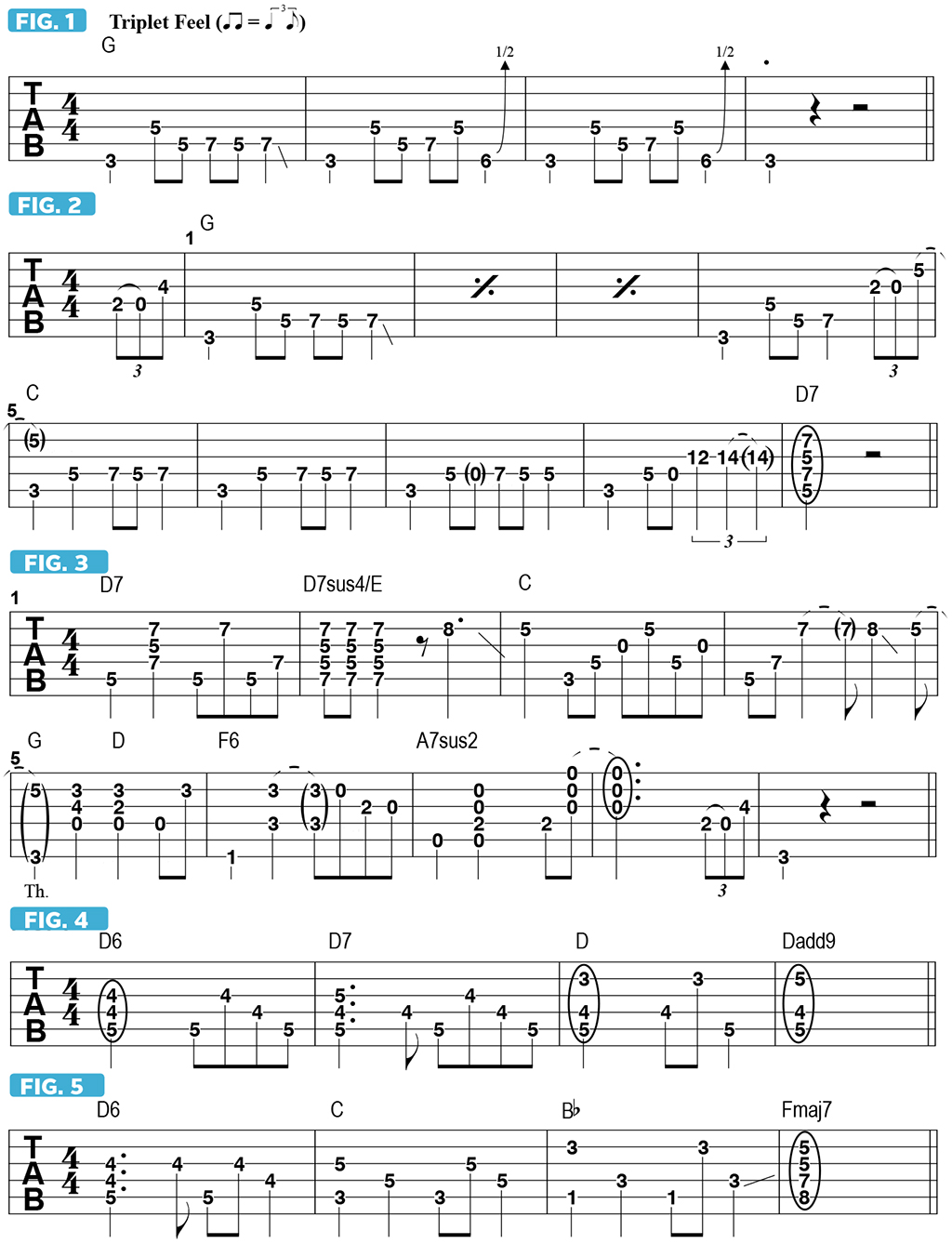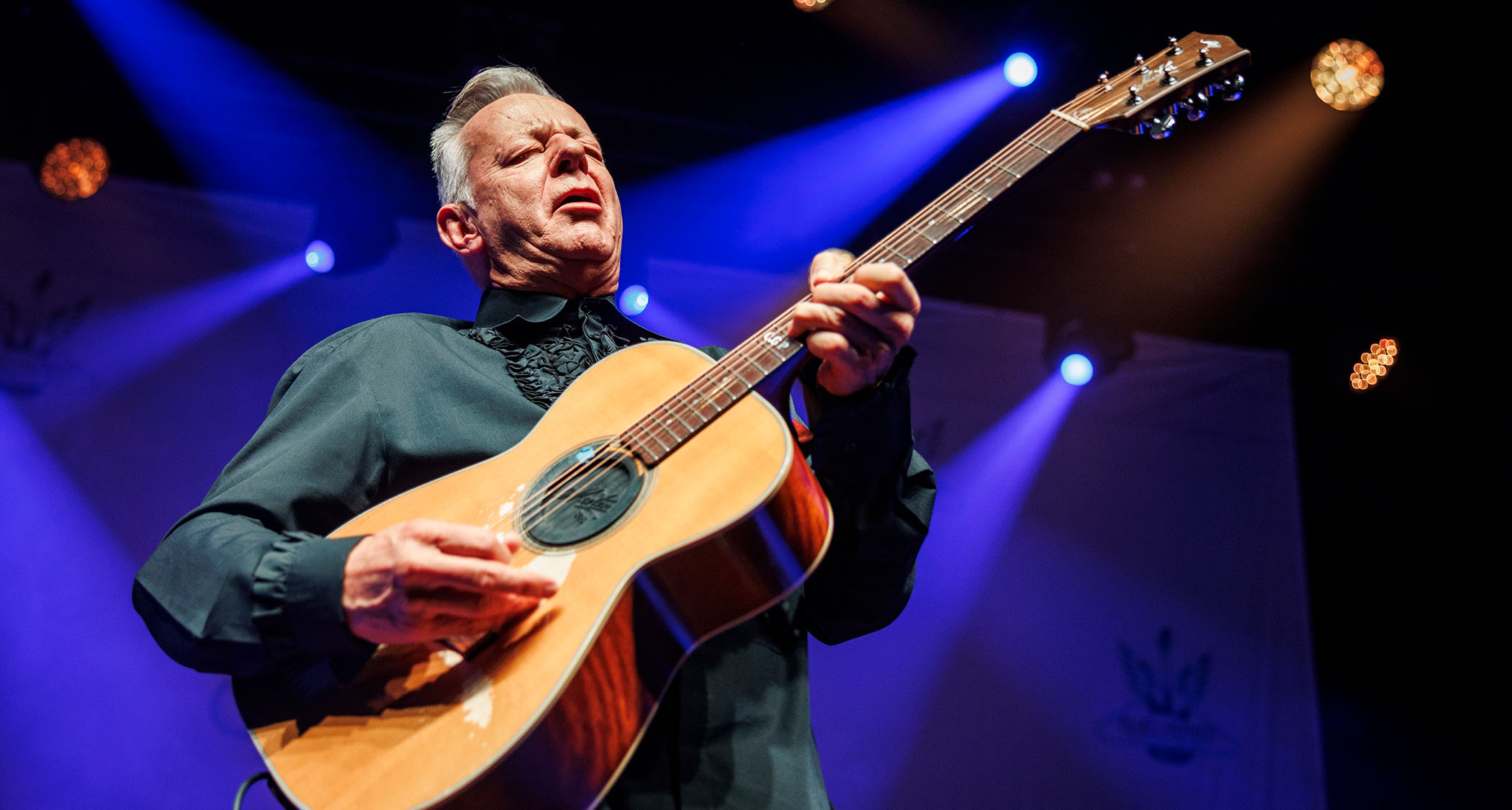Thematic Development, and How to Play "Atlantic Limited"
Learn some more about thematic development from Julian Lage.
In the previous column, we checked out “The Ramble,” the opening track from my 2018 album, Modern Lore. “The Ramble” is built around a bass figure that modulates from the key of E to G. I wanted the second track on the album, “Atlantic Limited,” to pick up from where “The Ramble” left off, and it does so by taking much of the same musical material but slowing it down and shifting from 6/8 meter to 4/4, played with a swinging eighth-note triplet feel.
FIGURE 1 illustrates the opening phrase in “Atlantic Limited,” which is built from the same notes as the primary phrase in “The Ramble.’’ The idea is transformed here to suit a different musical environment, indicative of what I think of as a riff-based blues figure.

Whereas “The Ramble” is uptempo and kind of a blazing number, this track is meant to feel like we’re putting the brakes on, with more space left than I’m normally comfortable with. What I mean by that is that the melody is presented as little fragments that intertwine with a bass-line-like ostinato (repeating) phrase. As shown in FIGURE 2, the phrase begins with a simple three-note melodic idea followed by the primary riff. In bar 4, the three-note melody and the riff modulate up a fourth, to C. In bar 8, I slide from G to A to set up the next chord, D7. The tune, up to this point, sits solidly in “blues” territory with the standard I-IV-V (one-four-five) progression represented in the key of G — G C D.
Guitarists often seem to feel the need to play a lot, in order to keep the music charged and moving forward, and the challenge here is to let the space between the phrases create that “charge.” For me, this set up the shift to the more fluid material that follows, as shown in FIGURE 3. In bar 1, I arpeggiate a D7 chord, and in bar 2 I move the bass note up one whole step, to E, resulting in a D7sus4/E chord. In bars 3 and 4, I alternate between C and D, shifting back to the I chord, G, in bar 5, and the progression D-F6-A7sus2 and a return to the top. In this way, the composition has been fleshed out in a very gradual and natural way.
This serves as the tune’s “A” section, which repeats. My approach for the bridge, or “B” section, was for it to sound exciting but not become too complex. As shown in FIGURE 4, in the first four bars, I simply move from D6 to D7, and to D and Dadd9. The second time through, I changed the harmony by adding a descending line underneath the same melody, as shown in FIGURE 5. The bridge wraps up with a burst of excitement. via the chord progression Cmaj7- Am-Bbadd9-D7 and a return to the top.
Like all of the music on Modern Lore, this composition serves as a launching pad for guitar-bass-and-drums interaction and to create a musical universe that’s not overpowered by the writing style but rather embraces collective improvisation.
Julian Lage is a world-renowned American jazz guitarist and composer whose latest album is 2019's Love Hurts.
All the latest guitar news, interviews, lessons, reviews, deals and more, direct to your inbox!
